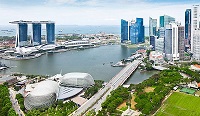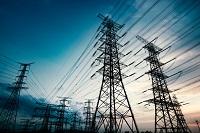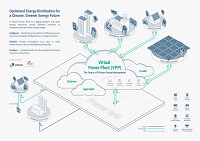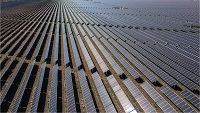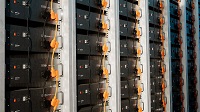Reply From EMA
In "Is this the best deal?" (TODAY, 20 Oct 08), Mr Conrad Raj suggested that the increase in electricity tariffs had benefited the power generation companies (gencos) and Singapore Power (SP) at the expense of consumers. But he has confused the issues and painted a distorted picture.
SP's electricity infrastructure subsidiaries in Singapore are regulated by the Energy Market Authority and earn a Return on Total Assets (ROTA) of about six per cent. This is a reasonable return to finance the investments needed to expand and maintain our electricity grid infrastructure. In comparison, the ROTA earned by other infrastructure companies overseas varies between 6 per cent and 15 per cent.
The regulatory framework is also designed to promote system efficiencies, so that the savings generated can be passed on to consumers. For example, SP has announced a reduction of 8-11 per cent in the charges for transporting electricity from 1 October 2008. As for the gencos, they are subject to competitive pressures in an open market environment. Investors are free to build new plants and compete in the electricity market, as companies like Keppel Merlimau Cogen and Sembcorp Cogen have done in recent years. The gencos have every incentive to innovate and provide electricity at competitive prices. The divestment of the gencos will attract new players into the industry and continue to keep a downward pressure on price. There is therefore no basis to link the divestment with the tariff revision. Mr Raj's suggestion that the gencos purchase their fuel at "the same time and [at] exactly the same price," is inaccurate. The gencos negotiate their own commercial contracts for natural gas with the gas suppliers. Every contract is different, but they follow the industry practice of indexing the price of gas to the price of fuel oil. Changes in this fuel oil cost are reflected in the electricity tariff every quarter. As the tariff is set in advance using the forward fuel oil price, there is a three-month time lag between the oil price movement and the actual tariff revision. Alternatively if we had used the spot oil price to compute the tariff, it would have been higher in 11 of the 16 quarters since 2004. Hence under the present formula, households have generally paid less for their electricity. For this quarter, the forward fuel oil price had risen sharply by 38 per cent. All of the increase in the tariff goes into paying for this higher cost of fuel. The tariff revision does not benefit either the gencos or SP.
Source: TODAY
Is this the best deal?; Next quarter should see fall in electricity tariffs, given steep decline in oil prices
SHOCKING! No pun intended but that was how the recent 22 per cent hike in electricity tariffs by Singapore Power (SingPower) was described by many. Households and other users have to pay 30.45 cents a kilowatt hour till the end of the year.
The power distributor's subsidiary SP Services explained that the increase was due to higher oil prices and that for the October to December quarter, the tariffs were pegged to a higher forward fuel oil price of $155.14 per barrel, compared with the previous quarter's $112.35 per barrel.
Mr Dave Ernsberger, the Asia editorial director of energy news service provider Platts, told this newspaper, "Fuel oil prices hit that record high for about one month only and we have to pay the high power prices for three months, which seems a little unlucky for all of us, really." But as the new fuel price was 38 per cent higher than the previous quarter's, SP was trying to tell us that it was not passing on the entire increase in the cost of the fuel oil.
What made the announcement even more egregious was that it came at a time when the price of oil - on which the tariffs are based despite the fact that 80 per cent of the electricity produced here comes from natural gas - was on its way down.
And in the third quarter, customers had already been subjected to a 5 per cent increase, again the result of high fuel prices - with the US$82.61 per barrel being 11 per cent higher than the US$74.40 per barrel cost of the second quarter.
According to a source, the price of natural gas supplied to the gencos (the power generating companies like Tuas Power, PowerSeraya and Senoko Power) has fallen in recent times in tandem with the decline in the price of High Sulphur Fuel Oil.
Furthermore, the latest hike comes in the wake of the financial crisis, rising costs and commodity prices, and, when everyone else is being exhorted to tighten their belts.
For the year ended March 31 this year, SingPower made a whopping $1.09 billion on revenues of $5.45 billion. In fact, in the last three years, the power distributor has been raking more than a billion dollars a year in net profits. The gencos, too, have been making good money. For instance, Tuas Power, which provides 25 per cent of the electricity consumed here, reported an Ebitda (earnings before interest, tax, depreciation and amortisation) of $331 million on revenues of $2.27 billion for the financial year ended March 31, last year. Net profit before tax rose to $218.7 million from $130 million the year before, and it had a healthy return on equity (ROE) of 16.5 per cent.
Senoko, the country's largest power generator, with an installed capacity of 3,300 megawatts and providing 30 per cent of the power supply, posted revenues of $2.49 billion, an Ebitda of $245 million and net income of $130 million for the year ended March this year.
With an installed capacity of 3,100 MW, PowerSeraya had for the year ended March this year, revenues of $2.8 billion, after-tax net profits of $218 million, and an ROE of 19 per cent.
But some suspect the hike was due to pressure from the gencos to maintain their profit margins, especially in the case of Tuas and Senoko, which were recently sold for $4.2 billion and $4 billion respectively. Tuas was bought by China Huaneng Group, while Senoko was acquired by a consortium led by Japan's Marubeni. PowerSeraya has been put up for sale.
One observer noted, "With the gencos being sold for high prices now, there might be pressure for the new genco owners to recover their capital from increasing the cost of electricity. As two of the gencos are now in foreign hands, the government (through the Energy Market Authority) may have less influence going forward to get the gencos to keep their prices low."
Furthermore, aren't the three main gencos supposed to be in competition with each other? Why do they then appear to be ordering their fuel at the same time and paying exactly the same price?
In the case of Singapore Power, perhaps we are paying the price for it achieving "one of the best network performance worldwide, surpassing its peers operating comparable underground networks."
For sure, the next quarter should see a sharp fall in electricity tariffs, given the recent steep decline in oil prices, but are we really getting the best deal?
CONRAD RAJ
